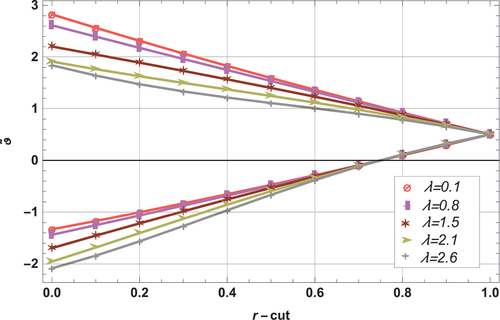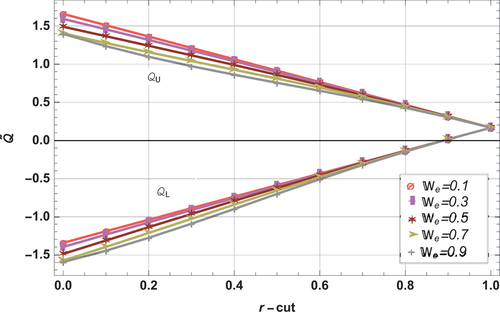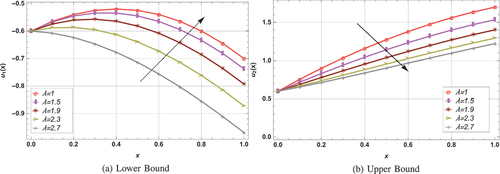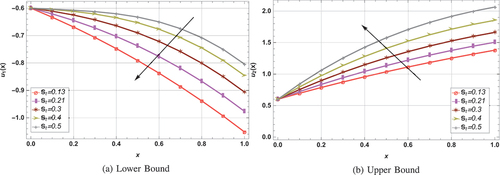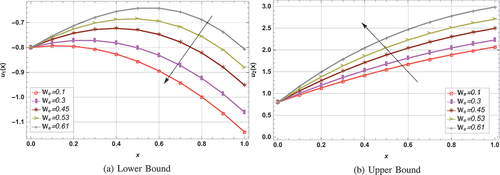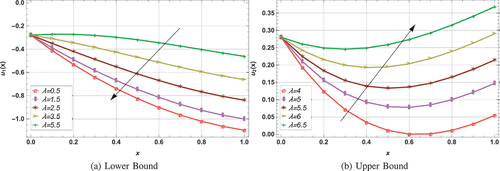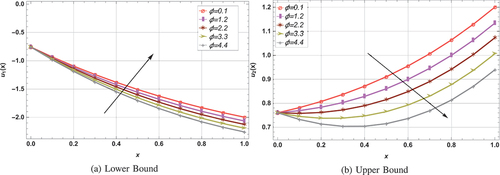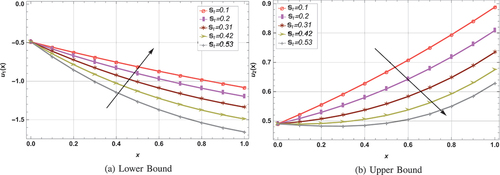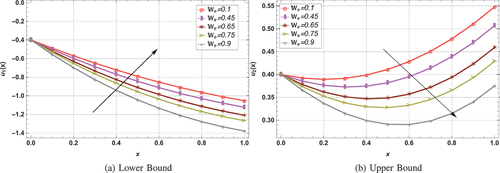Figures & data
Table 1. Thermophysical properties of base fluid and nanoparticles.
Table 2. Fuzzy solutions and residual errors for the influence of (lifting problem) when
= 0.01,
= 0.001 and
= 0.1.
Table 3. Fuzzy solutions and residual errors for the influence of (lifting problem) when
= 0.001,
= 0.3 and
.
Table 4. Fuzzy solutions and residual errors of the membership function under the influence of (lifting problem) when
= 0.001
= 0.002 and
.
Table 5. Fuzzy solutions and residual errors of the membership function under the influence of (lifting problem) when
= 0.001
= 0.99 and
.
Table 6. Fuzzy flow rate in lifting and drainage case when ,
= 0.5,
= 0.3 and
= 0.1.
Table 7. Fuzzy solutions and residual errors for the influence of (drainage problem) when
= 0.01,
= 0.001 and
= 0.2.
Table 8. Fuzzy solutions and residual errors for the influence of (draining problem) when
= 0.002,
= 0.3 and
.
Table 9. Fuzzy solutions and residual errors of the membership function under the influence of (draining problem) when
= 0.001
= 0.002 and
.
Table 10. Fuzzy solutions and residual errors of the membership function under the influence of (draining problem) when
= 0.001
= 0.99 and
.
Table 11. Comparison of HLM with ADM.
Figure 7. Influence of increasing on triangular membership function (lifting case) for
=2,
=1,
=0.3 and
=1.
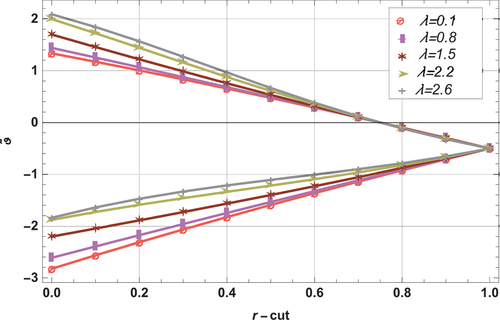
Figure 8. Influence of on triangular membership function (lifting case) for
=0.1,
=0.5,
=1 and
=0.2.
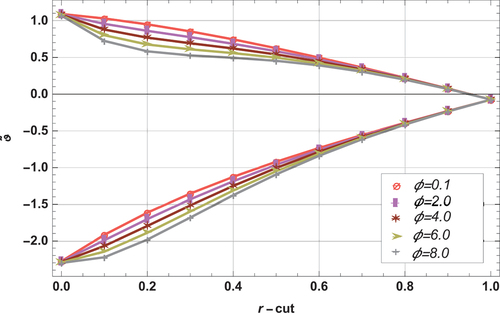
Figure 13. Influence of increasing on fuzzy velocity profile (draining case) for
=0.53,
=0.98 and
=0.65.
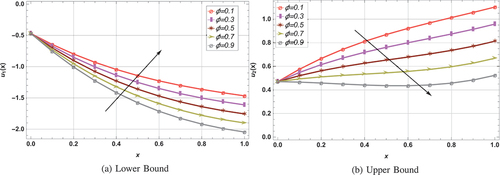
Figure 14. Influence of increasing on triangular membership function (draining case) for
=2,
=1,
=0.3 and
=1.
